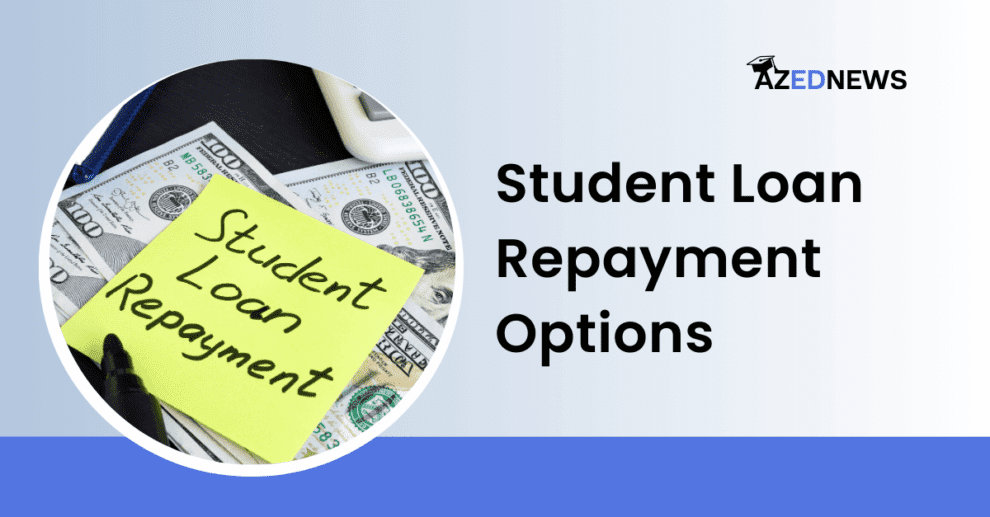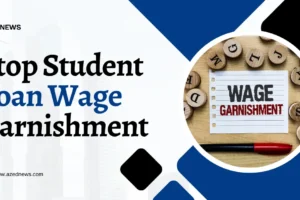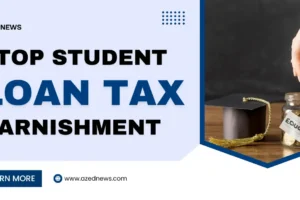Are you confused about the best approach to repay your federal student loan? Here are several student loan repayment options. Understand how to choose a repayment plan according to your student loan type.
Table of Contents
Many students turn to loans to fulfill their higher education ambitions. These loans can be a valuable resource, but they often come with the daunting challenge of repayment. Borrowers have a variety of student loan repayment options.
Federal student loans offer more flexibility, while private student loans have fewer options. Navigating the maze of these myriad repayment options can be a complex task.
This article will explore student loan repayment options to help you choose the right student loan repayment plan to repay your loan.
What is Student Loan Repayment?
Student loan repayment involves the mandatory repayment of funds borrowed for educational purposes, which often comes with accrued interest. There are many student loan-giving organizations, which provide loans to students for their education.
After completion of their education or after leaving school, borrowers must follow a predefined repayment schedule. These schedules may vary in terms of loan type, interest rates, and monthly payment amounts.
It is imperative for borrowers to manage their student loan repayments effectively, as it guarantees the fulfillment of their financial responsibilities and helps avoid loan default. A thorough understanding of the repayment options available and thoughtful planning are critical for graduates to successfully meet this financial obligation.
Federal Student Loan Repayment Options
Federal student loan repayment options provide borrowers with several options to effectively manage their loan payments. Here are the details of these options:
1. Standard Repayment Plan
The Standard Repayment Plan widely used for student loans in the United States involves making fixed monthly payments over 10 years. Borrowers commit to paying consistent monthly amounts, guaranteeing that the loan is repaid in full within the specified decade.
Although this student loan repayment option may involve higher monthly payments than other options, it generally results in a lower overall interest expense.
2. Graduated Repayment Plan
The Graduated Repayment Plan, a federal student loan repayment option, features initial low monthly payments that increase every two years. This plan allows borrowers to start with manageable payments and gradually adjust to their increasing income.
Although it offers flexibility in the initial years, the total interest expense may be higher compared to the standard repayment plan, in which monthly payments are fixed over a period of 10 years.
3. Income-driven Repayment Plans
Income-driven Repayment Plans are designed to increase affordability for borrowers. These plans calculate monthly payments as per the borrower’s income and family size, ensuring their manageability. Variations of this student loan repayment option like Income-Based Repayment (IBR), Pay As You Earn (PAY), and Revised Pay As You Earn (PAY) provide flexibility. Low-income borrowers can make lower payments, and any remaining balance can be forgiven after a set period, usually about 20-25 years.
4. Income-Contingent Repayment (ICR) Plan
The Income-Contingent Repayment (ICR) Plan calculates monthly payments based on the borrower’s income, family size, and loan balance. It offers annual payment adjustments to adapt to financial changes, and any remaining loan balance can be forgiven after 25 years of eligible payments.
Although this student loan repayment option may lead to higher overall interest costs, ICR plans are particularly useful for individuals with unpredictable or varying incomes.
5. Extended Repayment Plan
Extended Repayment Plan offers borrowers an extended timeline for repayment. This allows them to extend the repayment tenure up to 25 years, thereby reducing the monthly payments substantially. This student loan repayment option is useful for those looking to reduce monthly financial obligations.
However, it may result in a higher overall interest expense than the standard repayment plan, which has a shorter repayment period.
6. Income-Sensitive Repayment Plan (ISRP)
Income-sensitive Repayment Plan (ISRP) adjusts the monthly payment to match your financial situation, especially suitable for individuals with varying incomes. This student loan repayment option applies to the Federal Family Education Loan (FFEL) and allows a repayment term of up to 15 years.
Benefits of Federal Student Loan Repayment Options
Federal student loan repayment options come with a range of valuable benefits designed to ease the financial burden of educational loans. It provides flexibility for borrowers. Let’s learn about these benefits:
- Loan Forgiveness Programs
Federal programs, such as Public Service Loan Forgiveness (PSLF) and Teacher Loan Forgiveness, offer the possibility of having a portion or even all of your loan balance forgiven if you meet specific eligibility criteria.
- Fixed Interest Rates
Federal loans usually have fixed interest rates, which provide stability and predictability to borrowers, as they will not be subject to interest rate fluctuations.
- Deferment and Forbearance
During financial difficulties, you can temporarily defer or reduce your loan payments without negatively impacting your credit. This safety net is important for those facing unexpected challenges.
- Loan Consolidation
Federal loan consolidation allows you to combine multiple loans into one, streamlining the repayment process and potentially extending the loan term. It can lead to lower monthly payments.
- Grace Period
Most federal loans offer a grace period after graduation, giving you some time before you begin repayment. This grace period provides a smooth transition into the world of loan payments.
- Loan Discharge in Special Circumstances:
Federal loans can be discharged in specific circumstances, such as permanent disability or school closure, relieving borrowers of the obligation to repay the loan.
- No Prepayment Penalty
Federal loans do not impose a penalty for paying your loan off before the due date. This encourages responsible borrowers to reduce their debt faster without incurring additional costs.
- Loan Rehabilitation
For borrowers who have defaulted on their federal loans, there is an option for loan rehabilitation. By making a series of timely payments, you can get your loan in good standing and improve your credit.
Private Student Loan Repayment Options
Borrowers with private student loans typically have fewer repayment options. The following are the private student loan repayment options:
1. Immediate Repayment
Payment of principal and interest becomes due as soon as your loan is disbursed.
2. Full Deferment
After leaving school, you start paying the interest and principal within a predetermined period. You don’t have to pay anything when you are enrolled in school.
3. Interest-only Payments
When you graduate or stop being enrolled for less than half a semester, you begin paying principal and interest. Until then, you make interest-only payments.
4. Fixed payments
Upon leaving school or dropping below half-time enrollment status, you begin making larger, regular payments after paying a small, fixed amount while you are enrolled.
If you can’t make your normal loan payments, your lender may be able to offer you a deferment or forbearance period. However not all lenders do this, and it usually requires financial hardship.
Federal vs Private Student Loan Repayment Options
Federal and private student loans offer different repayment options, each with its unique advantages and limitations. Federal student loans, which are government-backed, generally offer more borrower-friendly repayment options. Income-driven repayment (IDR) plans are particularly popular among these.
These IDR plans adjust your monthly payments based on your income and family size, ensuring that your payments remain manageable even as your financial situation changes.
Additionally, federal loans offer loan forgiveness opportunities such as Public Service Loan Forgiveness (PSLF), which can erase the remaining balance after 10 years of qualifying payments for those who work in public service.
In contrast, private student loans are offered by banks, credit unions, or online lenders. Private lenders may not offer flexible repayment plans like federal loans. Typically, borrowers face fixed monthly payments depending on the loan terms, making it important to select the right lender and loan terms that fit your financial circumstances. Unlike federal loans, private loans typically do not feature federal loan forgiveness programs like PSLF.
When choosing between federal and private student loans, it is essential to consider your financial situation, career aspirations, and the overall cost of borrowing. Federal loans may be a more suitable option for those who expect to earn a low income or plan to work in public service because of their flexible repayment and forgiveness options.
Private loans can be a viable option for borrowers who have a strong credit history and a clear path to high earning potential, although they come with less flexible repayment terms.
When Will Student Loan Repayment Start?
The start of student loan repayment varies depending on the type of loan and the specific terms of the borrower’s agreement. Typically, federal student loans have a grace period, which typically begins six months after the borrower graduates, leaves school, or drops below half-time enrollment.
On the other hand, private student loans do not always offer a grace period, and repayment may begin immediately after graduation or while the borrower is no longer enrolled.
The exact date when repayment of student loans begins, whether for federal or private loans, should be detailed in the loan agreement or communicated by the loan servicer.
So, you need to understand the terms of your loan and be ready for the start of repayment to avoid any missed payments or default.
8 Strategies to Pay Off Your Student Loans Fast
- Budget Blueprint: Start your journey to financial freedom by carefully crafting a monthly budget. This tool will allow you to carefully monitor your income and expenses, earmarking a part of your earnings specifically for loan repayment.
- Extra Miles: The ability to pay extra should not be underestimated. When the opportunity arises, put any surplus funds toward your loan. These seemingly minor extra payments can add up to a substantial amount over time, speeding up your loan approval.
- Refinancing Solution: Consider the option of refinancing the loan to ensure a lower interest rate. This prudent move can translate into substantial long-term savings on your outstanding balance.
- Employment Perks: Look into your workplace benefits, as some employers offer student loan assistance or repayment incentives. Check if your employer extends such benefit provisions.
- Windfall Allocations: Redirect unexpected financial windfalls, such as tax refunds, bonuses, or monetary gifts, toward your student loans. This approach enables you to make significant progress in reducing the principal amount.
- Automatic Assurance: Protect your financial well-being by setting up automatic loan payments. This proactive measure not only prevents late payments but also contributes to a better credit profile.
- Income-driven Route: Federal loan holders should explore income-driven repayment plans. These plans calibrate your monthly payments based on your income, providing a more manageable approach to loan repayment.
- Informed Empowerment: Be alert to developments in loan forgiveness programs, particularly those tailored to public service occupations or specific career paths. Taking advantage of such programs can significantly reduce your loan balance.
FAQs
1. How do I start repaying my student loans?
Typically, you begin repaying federal student loans six months after graduation. Private loan terms may vary. So, it is important to check with your loan servicer for specific details.
2. What are the different student loan repayment plans available?
Federal student loans offer several repayment plans, including standard, graduated, income-driven, extended plans, etc. You should choose the one that suits your financial situation.
3. Can I change my student loan repayment plan if I’m having trouble keeping up with my payments?
Yes, you can switch to an income-driven student loan repayment option if you are having difficulty making payments. It is advisable to contact your loan servicer to explore options to adjust your repayment plan.
4. How do I Know what repayment plan I am eligible for?
To find out your eligible student loan repayment option, access the studentAid.gov website and use their repayment estimator tool. It will provide options based on your loan type, income, and other relevant factors.
Conclusion
Selecting an appropriate student loan repayment option is essential to deal with the financial complexities of pursuing higher education. It is important to check and select a plan that best suits your financial situation and long-term objectives.
Whether you decide on income-driven repayment or the standard repayment plan, it is paramount to make well-informed choices to achieve a more manageable and successful journey toward financial freedom.












Add Comment